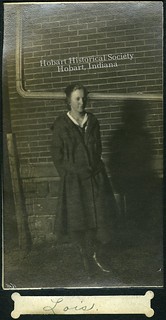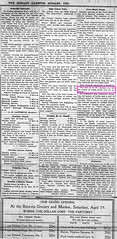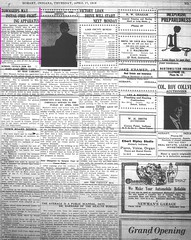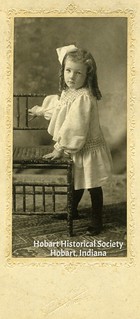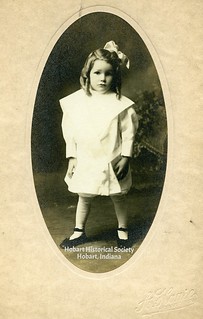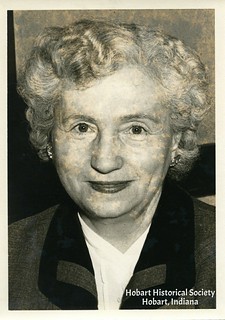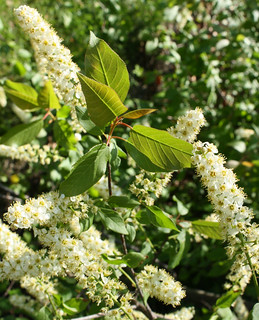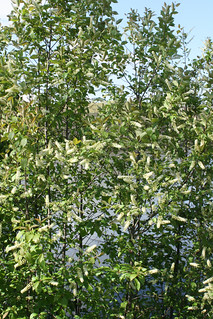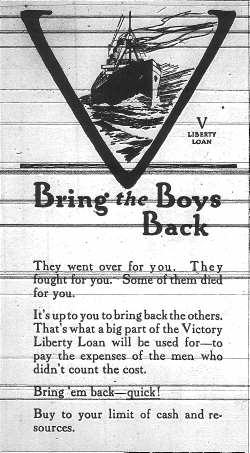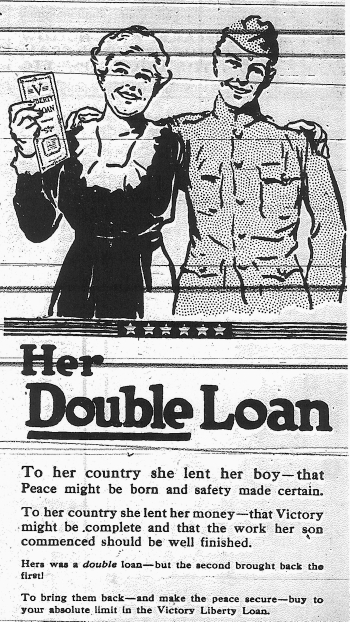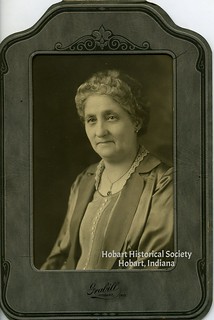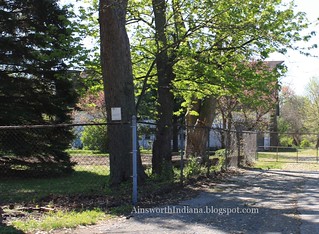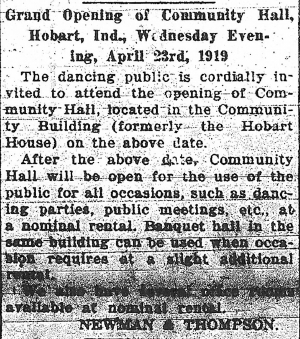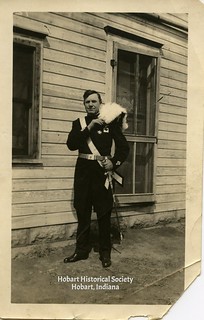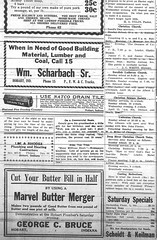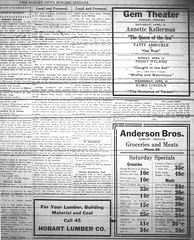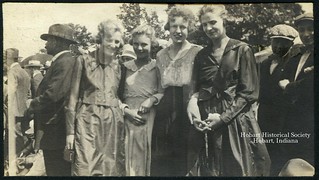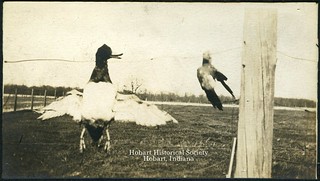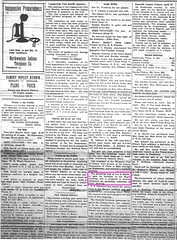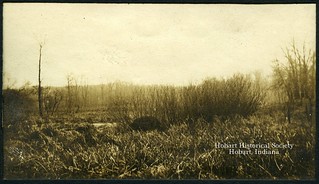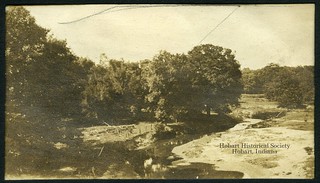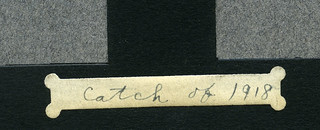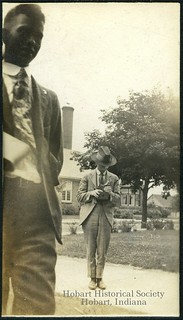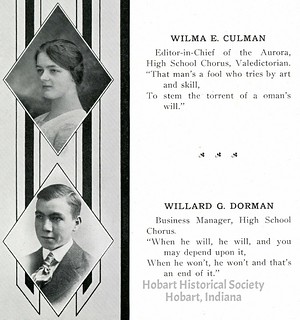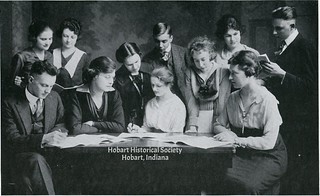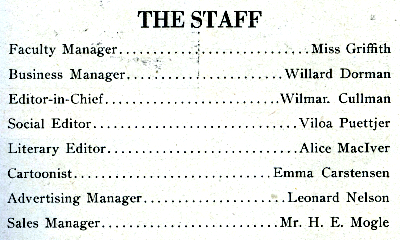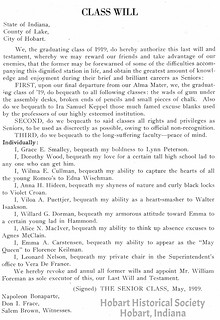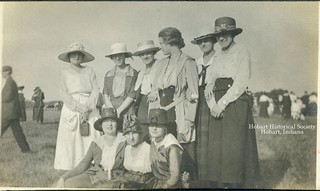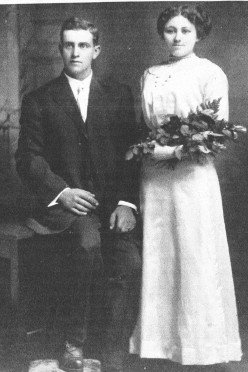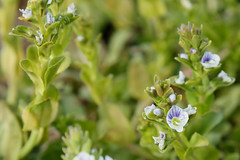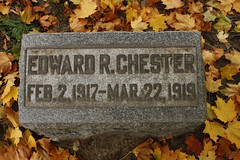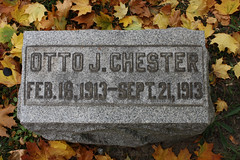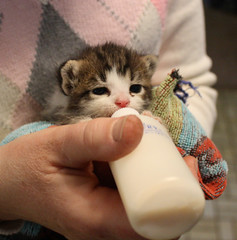"Stay for supper, won't you?" Minnie Osborne urged her sister, Ethel Meyers. The little Meyers family — Ethel, Warren and their nine-year-old daughter, Marie — had come out from their Porter County farm to spend Saturday, March 29, in Hobart with the Osbornes.
It was a tempting offer. Ethel and Warren wavered, but finally duty won out: there were chores that needed to be done before dark, and a drive of nearly 20 country miles lay between Hobart and their farm northeast of Hebron. So around 5 o'clock the Meyers climbed into their Ford and set out, heading southeast. Their route was through Wheeler.
At Wheeler, William Raschka sat in his car near the railroad depot, looking toward the west crossing. Two sets of railroad tracks, the Pennsy and the Nickel Plate, ran side-by-side through the town. William could probably already hear the rumble of the Nickel Plate mail train, approaching from the east. It was running late, and with no need to stop in Wheeler, the engineer could throw open the throttle to make up for lost time.
As William watched, two autos approached the crossing: from the north, the Meyers' Ford, and from the south, a car driven by Clarence Burge of Wheeler. There were, of course, no lights or gates at the crossing. Clarence cleared the Nickel Plate tracks, but he had noticed the train flying toward the crossing, so he called out a warning to Warren, who was just then crossing the Pennsy tracks.
What happened next mystified Clarence. Later he theorized that his shouting may have confused Warren. For whatever reason, the Meyers' Ford slowed down, and then, as it rolled onto the Nickel Plate tracks, it stopped.
The speeding train caught the Ford square in the middle. Pieces of the car were flung toward the south, scattered for a hundred feet along the tracks, but the top of the car and the three occupants it sheltered were caught by the engine's pilot and carried for the half-mile it took the train to stop.
Clarence and William left their cars and ran to catch up with the engine.
William knew the Meyers family, so it must have been a shock when the men pulled aside the wrecked car top and found Warren and Marie dead, killed instantly. Ethel, remarkably, was alive and conscious, though badly injured. She recognized William. He asked her if he could do anything to help, if he could notify anyone. She told him no, and added that she would be all right as soon as the pain stopped.
She and the bodies of her husband and child were loaded onto the train that had hit them, bound for Hobart. Someone probably called ahead to alert doctor and undertaker; when the train stopped at Hobart, the bodies were removed, to be taken to Alwin Wild's undertaking parlor, while Dr. C.C. Brink boarded the train to accompany Ethel to Mercy Hospital in Gary.
She died on the ambulance on the way to the hospital.
Warren was survived by his father, Henry Meyers of Crown Point, and one brother. Ethel was survived by her parents, Wallace and Mary Thompson of Hebron, two twin brothers, and — besides her sister, Minnie Osborne — another sister, Olive, now married to Arthur Weiler of Deep River.
The little family's funeral took place that Wednesday in Hebron, and they were laid to rest in the Salem Cemetery.
I expect that Minnie Osborne suffered a little from the kind of guilty hindsight that tends to afflict survivors in such cases — that she spent some time wishing she had been more forceful in urging her sister and brother-in-law to stop worrying about the chores so much, just this once, and stay for supper.
Sources:
♦ 1900 Census.
♦ 1910 Census.
♦ 1920 Census.
♦ 1930 Census.
♦ "Family of Three Killed at Wheeler." Hobart Gazette 4 Apr. 1919.
♦ "Myers Family Killed in R.R. Accident at Wheeler." Hobart News 3 Apr. 1919.


